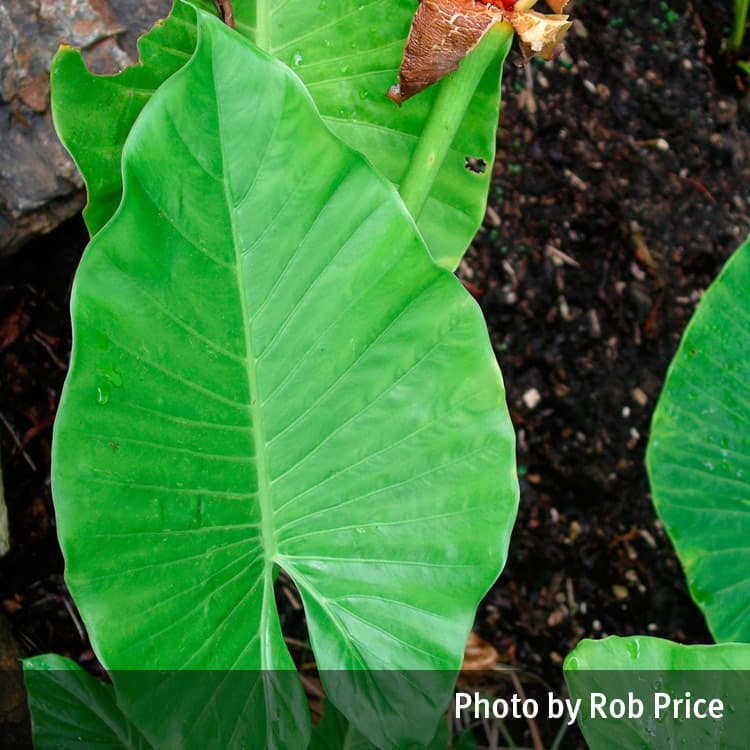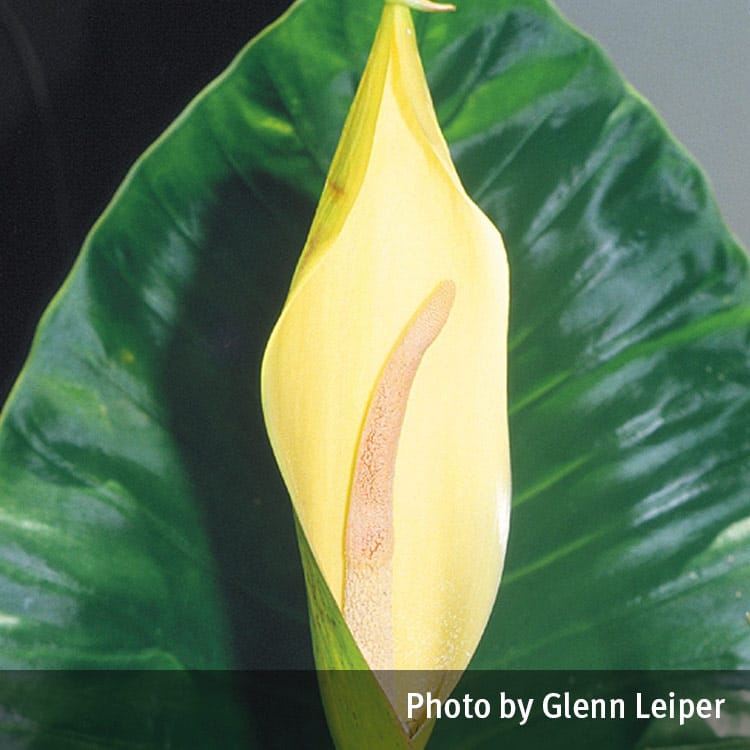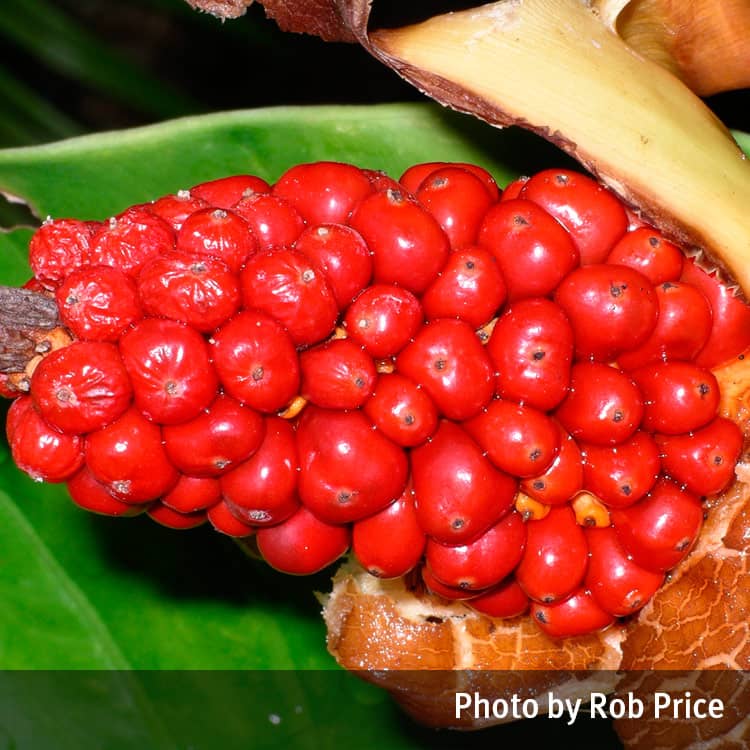Warning
Seek urgent medical attention if lips or tongue become swollen or if there is difficulty breathing or swallowing.
Description
These two native species are very similar in appearance. They grow to 2.5m high with large fleshy leaves and thick fleshy rootstock and stems, which can be semi-prostrate.
The perfumed flowers consist of a greenish cream coloured spathe, which is pointed at the tip and open along one side, enclosing a central yellow spike.
The leaves are shiny, dark green and fleshy, 30–100cm long, heart-shaped at the base and narrowed to a blunt tip.
Toxicity
Symptoms
If any part of the plant is eaten or chewed, it can cause immediate pain, burning sensation and swelling of the lips, tongue and mouth. A feeling of local numbness may follow. A few deaths have been reported in children who have eaten leaves or roots. The sap can be extremely irritating to the eyes.
Images



Details
Common name: Cunjevoi
Botanical name: Alocasia brisbanensis, Alocasia macrorrhizos
Family: Araceae
General description: These two native species are very similar in appearance. They grow to 2.5m high with large fleshy leaves and thick fleshy rootstock and stems, which can be semi-prostrate.
Flowers: The perfumed flowers consist of a greenish cream coloured spathe, which is pointed at the tip and open along one side, enclosing a central yellow spike.
Leaves: The leaves are shiny, dark green and fleshy, 30–100cm long, heart-shaped at the base and narrowed to a blunt tip.
Fruit/Berries: The fruit are red berries 8–15mm long, ovoid shaped and clustered along the spike.
Other: The sap is clear.